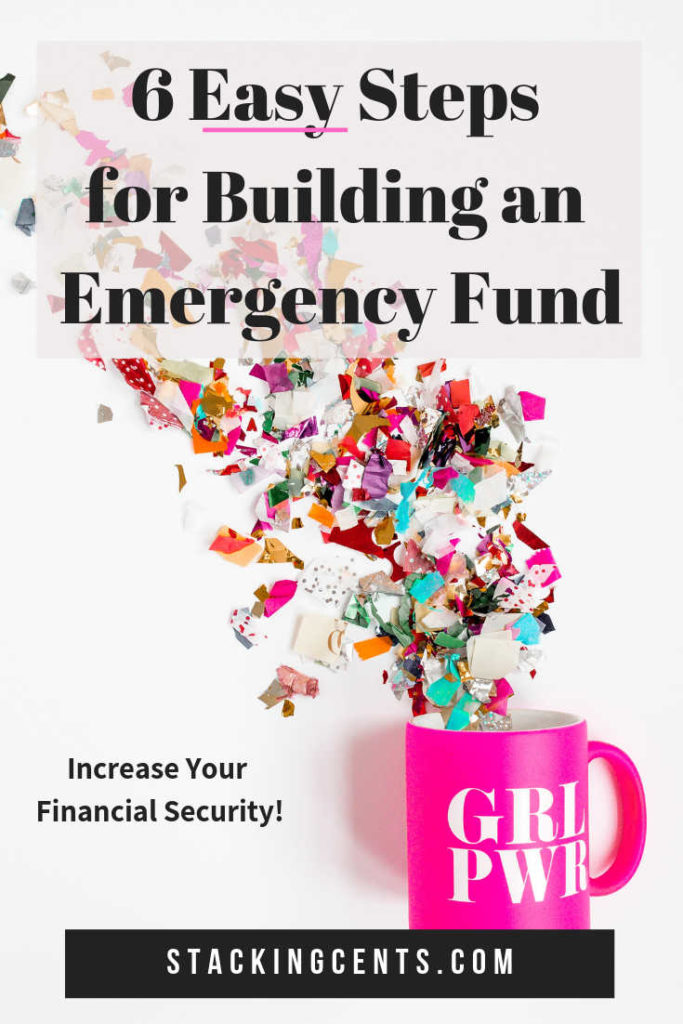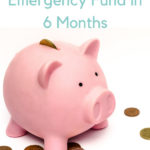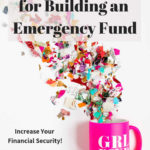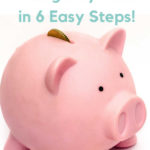It’s common to hear that you should start building an emergency fund by tallying up your monthly income and expenses. Honestly, I believe it’s completely okay to skip this step as long as you know your income exceeds your essential expenses. Don’t let perfection be the enemy of progress! It’s better to dive in and start building an emergency fund immediately than wait for some magical perfect time or until you think you’ve achieved mastery of your budget.
How much should you save? A general rule of thumb is 3-6 months of average expenses. It can take a while to reach that level, but don’t give up. Knowing you have the cash on hand for true emergencies is so empowering and provides peace of mind.

Any windfalls should go straight into your emergency fund
Did you receive a tax refund? Birthday or holiday gift money? When you’re prioritizing building an emergency fund all windfalls should go straight into savings until you reach your goal.
Earn extra cash
Could you clean out your clutter and earn some cash? Take on some overtime? Earn extra money with a side hustle? A little bit of creativity can go a long way towards increasing your earnings and hitting your goal.
Set a monthly savings goal
It’s totally normal if the total dollar amount you’re seeking to save sounds daunting. Break the total down by month or even by week until it feels doable. Sure, both add up to the same thing, but you want to get to the point where your brain believes you can achieve your goal. Telling yourself you need to save $10 per day can sound a lot more feasible than saving $300 per month.
Automatic withdrawals are your friend
One of the simplest ways to build your emergency fun is to set up an automatic withdrawal from your checking account each pay period, so that the money goes to your emergency fund before you even see it. The less work it is for you, the more likely you are to make the transfer.
Decide where to stash your emergency fund cash
Ideally your emergency fund will be accessible, but not so accessible you’ll dig into it when it isn’t a true emergency. I used to keep more cash in my checking account, until I realized I could put almost any emergency on my credit card, buying myself a few weeks to transfer the money back in to cover the bill. I find that out of sight, out of mind really helps me not dig into my emergency savings unless it’s a true emergency.
Take a no spend month challenge
Most of us could probably get by for a month with limited spending. Think about all the food in your pantry and freezer. Can you eat more meals at home? Use up beauty products you already own? Challenge yourself to see how many days you can go without a purchase. I like to keep a running list of items I think we need and wait at least 48 hours before making a purchase. Often times I find I can get by without the item or I no longer really want it. You can go back to your old habits after 30 days, but take a few weeks to challenge yourself, postpone gratification and build up that emergency stash!
What’s been the biggest challenge for you in building your emergency fund? Any tips I missed?



Leave a Reply